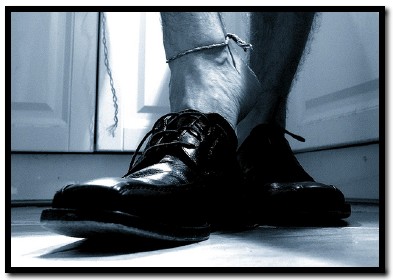It’s Hard to Step into Someone Else’s Shoes
Posted by Adam Benforado on June 25, 2009
 Stanley Fish has an interesting new post (over on his New York Times blog) that reflects on a panel discussion at NYU Law School on the question of what kind of Supreme Court justices we want. Do we actually desire a judge with “empathy”?
Stanley Fish has an interesting new post (over on his New York Times blog) that reflects on a panel discussion at NYU Law School on the question of what kind of Supreme Court justices we want. Do we actually desire a judge with “empathy”?
Fish gave particular attention to “Judge Sotomayor’s now famous or infamous speculation that a wise Latina might know something an old white guy did not.”
His analysis aligns with op-eds that Jon Hanson and I have written recently for the Philadelphia Inquirer and the anecdote he relates at the end is an excellent demonstration of just how blind we can be to the power of situation and, in particular, how easy it is to become lost in one’s own perspective.
Here is an excerpt of the post
* * *
[If Sotomayor] is being descriptive, if she is saying only that no one can completely divest herself of the experiences life has delivered or function as an actor without a history, she is announcing no method at all. She is merely acknowledging a truth (as she sees it) about the human condition: the influences [Alabama Republican Senator Jeff] Sessions laments are unavoidable, which means that no one can be faulted for viewing things from one or another of the limited perspectives to which we are all (differently) confined.
In fact – and this is what Sotomayor means when she talks about reaching a better conclusion than a white man who hasn’t lived her life – rather than distorting reality, perspectives illuminate it or at least that part of it they make manifest. It follows that no one perspective suffices to capture all aspects of reality and that, therefore, the presence in the interpretive arena of multiple perspectives is a good thing. In a given instance, the “Latina Judge” might reach a better decision not because she was better in some absolute, racial sense, but because she was better acquainted than her brethren with some aspects of the situation they were considering. (As many have observed in the context of the issue of gender differences, among the current justices, only Ruth Bader Ginsburg knows what it’s like to be a 13-year-old girl and might, by virtue of that knowledge, be better able to assess the impact on such a girl of a strip-search.)
Throughout the evening, John Payton [head of the NAACP Legal Defense Fund] reminded us that these are not merely theoretical points. He read a chilling sentence from Herbert Wechsler’s influential essay “Toward Neutral Principles.” Wechsler is making the point that laws mandating the separation of the races burden both races equally: “In the days when I was joined with Charles Houston in a litigation in the Supreme Court before the present building was constructed, he did not suffer more than I in knowing that we had to go to Union Station to lunch together during the recess.”
One might wonder whether Houston would equate the lunchtime inconvenience suffered by his colleague with the humiliations he had to endure every day of his life. One might be amazed, as Payton was, by Wechsler’s blindness to what he is saying. He was a great legal mind, but something was missing. You can call it empathy or (as some in the audience suggested) you can call it understanding or imagination. I called it hearkening to the spirit rather than the letter. But whatever you call it, everyone present that evening agreed that it was what we wanted.
* * *
To read some related Situationist posts, see “Stereotyping Sotomayor” and “The Situation of Judicial Activism,” which contains links to still other related Situationist posts.


















Compassion, Law, and Judge Sonia Sotomayor « The Situationist said
[…] a free copy of this essay from SSRN, click here. For related Situationist pieces, see “It’s Hard to Step into Someone Else’s Shoes,” “Stereotyping Sotomayor,” and “The Situation of Judicial Activism.” For a […]